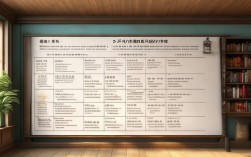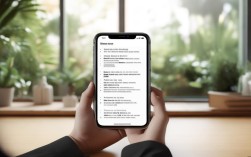服装在雅思口语中的表达与应用
在雅思口语考试中,“clothing”是一个高频话题,涉及日常穿着、时尚文化、购物习惯等多个维度,掌握相关词汇、表达方式和地道用法,不仅能帮助考生流利回答问题,还能展现语言能力与文化理解,本文将从词汇积累、话题分类、实用技巧和常见误区四个方面,系统解析如何围绕“clothing”展开口语表达。

核心词汇与短语积累
准确使用词汇是口语表达的基础,围绕“clothing”,考生需掌握以下分类词汇:
-
服装类型
- 正式场合:suit(西装)、evening gown(晚礼服)、blazer(运动夹克)
- 日常休闲:T-shirt(T恤)、jeans(牛仔裤)、hoodie(连帽衫)
- 功能性服装:raincoat(雨衣)、sports jacket(运动夹克)、thermal underwear(保暖内衣)
-
服装材质
- Cotton(棉)、linen(亚麻)、wool(羊毛)、polyester(聚酯纤维)
- 例句:I prefer cotton shirts because they’re breathable and comfortable.
-
时尚相关表达
- Trendy(时尚的)、outdated(过时的)、vintage(复古的)、custom-made(定制的)
- 例句:Fast fashion makes trendy clothing affordable but often low-quality.
-
动词与短语
- Try on(试穿)、match with(搭配)、fold up(折叠)、throw on(随便穿上)
- 例句:I always try on shoes before buying them to ensure they fit well.
雅思口语话题分类与答题思路
雅思口语Part 1至Part 3均可能涉及“clothing”话题,需根据不同问题类型调整回答策略。
Part 1:日常习惯与偏好
- 常见问题:
- What kind of clothes do you usually wear?
- Do you like shopping for clothes? Why?
- 答题技巧:
- 用具体例子支撑观点,避免泛泛而谈。
- 例:I usually wear casual clothes like jeans and a simple shirt because they’re practical for work and daily life.
Part 2:个人经历描述
- cue card示例:
Describe an item of clothing you wear often. - 答题结构:
- 是什么:A blue denim jacket I bought last year.
- 为什么重要:It’s versatile and goes with almost any outfit.
- 相关故事:I wore it to a friend’s wedding and received many compliments.
Part 3:社会与文化讨论
- 延伸问题:
- Why do some people care more about brand-name clothing?
- How has fashion changed in your country over the decades?
- 高分思路:
- 分析社会现象(如消费主义、身份认同)。
- 例:Brand-name clothing is often seen as a status symbol, especially among young people who want to fit in or stand out.
实用表达与句型
-
对比与偏好
- I’m more into comfortable clothing than trendy stuff.
- While some people prefer formal wear, I feel at ease in casual clothes.
-
描述影响
- Clothing can boost one’s confidence.
- The way you dress might influence how others perceive you.
-
虚拟语气
If I could design a piece of clothing, it would be a sustainable dress made from recycled materials.
常见误区与注意事项
-
避免重复用词
- 错误:I like clothes, clothes, and more clothes.
- 正确:I’m fond of apparel, garments, and outfits.
-
文化差异意识
提及特定文化服装时(如cheongsam、kimono),需简要解释其含义。
-
语法准确性
注意单复数(如clothing不可数,但clothes是复数)。
服装相关话题扩展练习
以下表格列出可深入讨论的子话题及关键词:
| 话题方向 | 例句 | |
|---|---|---|
| 环保时尚 | sustainable, eco-friendly, upcycle | Many brands now use recycled materials to reduce waste. |
| 传统服饰 | cultural heritage, embroidery | The cheongsam reflects Chinese elegance with its intricate designs. |
| 职业着装 | dress code, formal, smart casual | Tech companies often allow smart casual to balance professionalism and comfort. |
FAQs
Q1: 如何在口语中自然过渡到服装话题?
A1: 可通过日常场景引入,“Speaking of daily routines, I always spend 10 minutes choosing what to wear—clothing really sets the tone for my day!”
Q2: 如何描述一件不合身的衣服?
A2: 使用具体细节: “The jacket was too tight around the shoulders and the sleeves were three inches longer than my arms, which made it look awkward.”
通过系统积累词汇、灵活运用句型并结合文化背景,考生可在雅思口语中自信、流畅地展开“clothing”话题的讨论,展现语言的综合运用能力。











